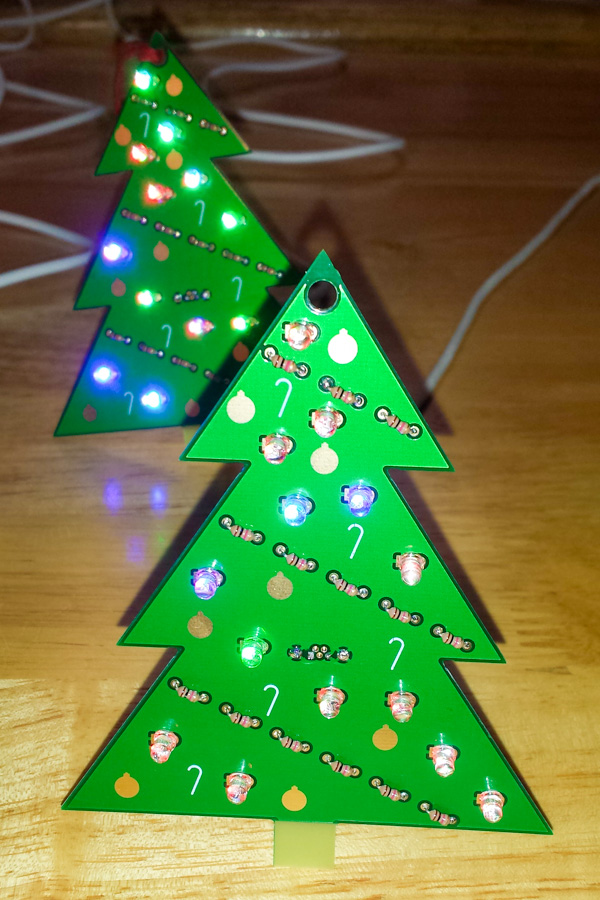LED Christmas ornaments
I’ve been learning KiCad this year, and have made several circuit boards with it so far. This holiday season, I decided to use those skills to make light-up Christmas ornaments to give to my friends and family.
Each LED is in series with a resistor, although the resistors are arranged together to form a garland. A Micro USB receptacle on the back of the ornament provides 5V power. I used 3mm slow-cycling RGB LEDs from SparkFun, so that the LEDs gradually fade from one color to another, without needing external circuitry.
I made a footprint for the candy canes, which is just a line and an arc on the silkscreen. I made another footprint for the ornaments, made up of three overlapping SMD pads on the soldermask layer only. Similarly, the trunk is a footprint with a single SMD pad on the soldermask layer only. The difference between the trunk and the ornaments is that the ornaments are over a GND fill, so the ornaments expose the copper underneath, while the trunk exposes the FR4 underneath.
I removed the silkscreen from the resistor and LED footprints, to keep the front of the board looking “clean.” The front is exclusively a ground plane; all of the other wiring is on the back.
The ornament can be hung on a tree by tying a string through the hole on top. Or, it can be propped up by the USB cable and used as a standalone decoration.
I had the board fabbed at EasyEDA because they are inexpensive and offer green soldermask. (Unlike OSH Park, which is always purple.) I chose the ENIG finish, because I thought that would look better on the exposed-copper ornaments.
The ornament is open source and is available on GitHub.
I’m also working on making a “night light” version of the little tree. The night light will have a USB A plug on the back, instead of the USB Micro B receptacle which the ornament has. This way, the night light can plug directly into a USB charger, which then plugs into the wall, rather than connecting via a cable, as the ornament does.
Update: I’ve now also written an Instructable with detailed instructions for building the ornament.
